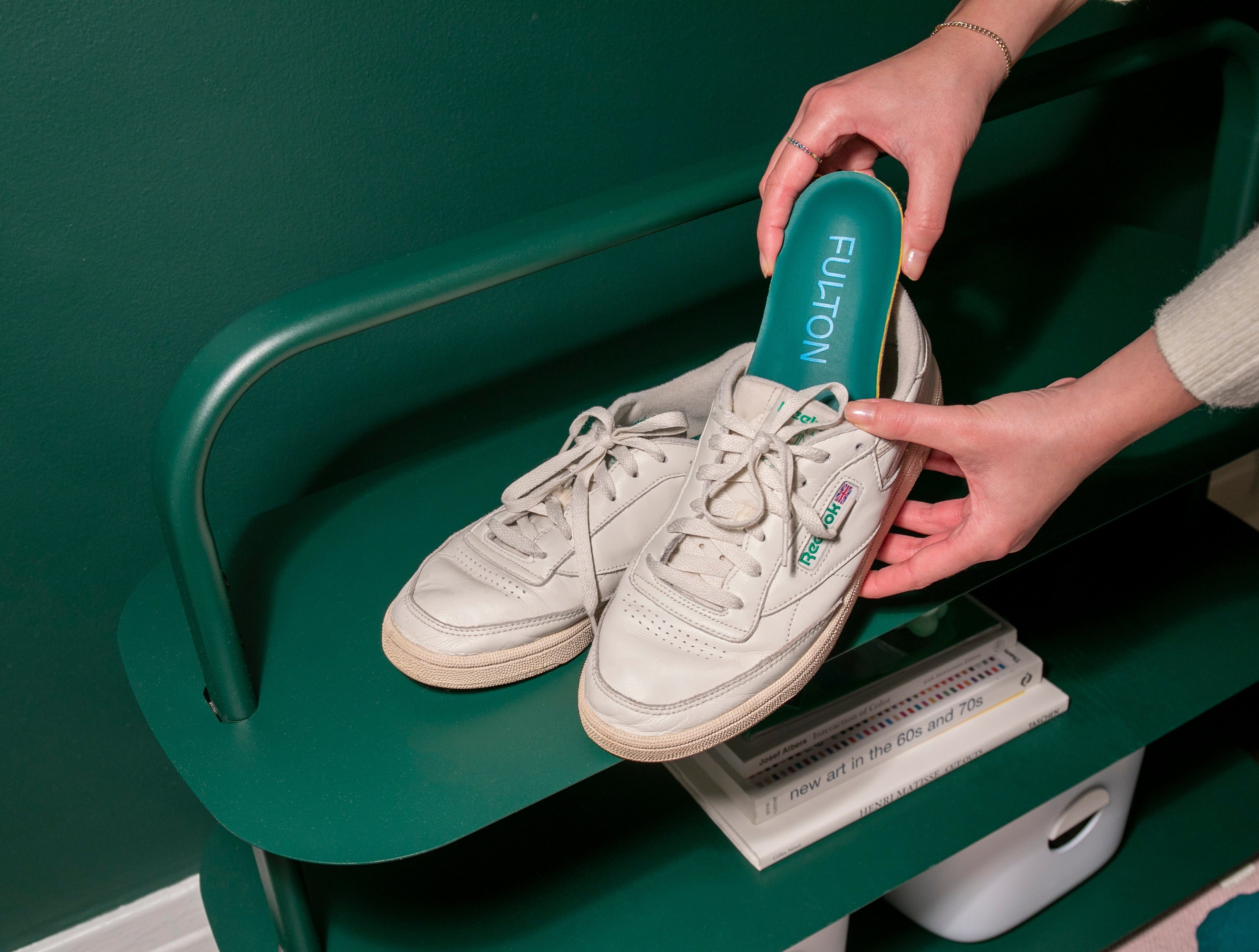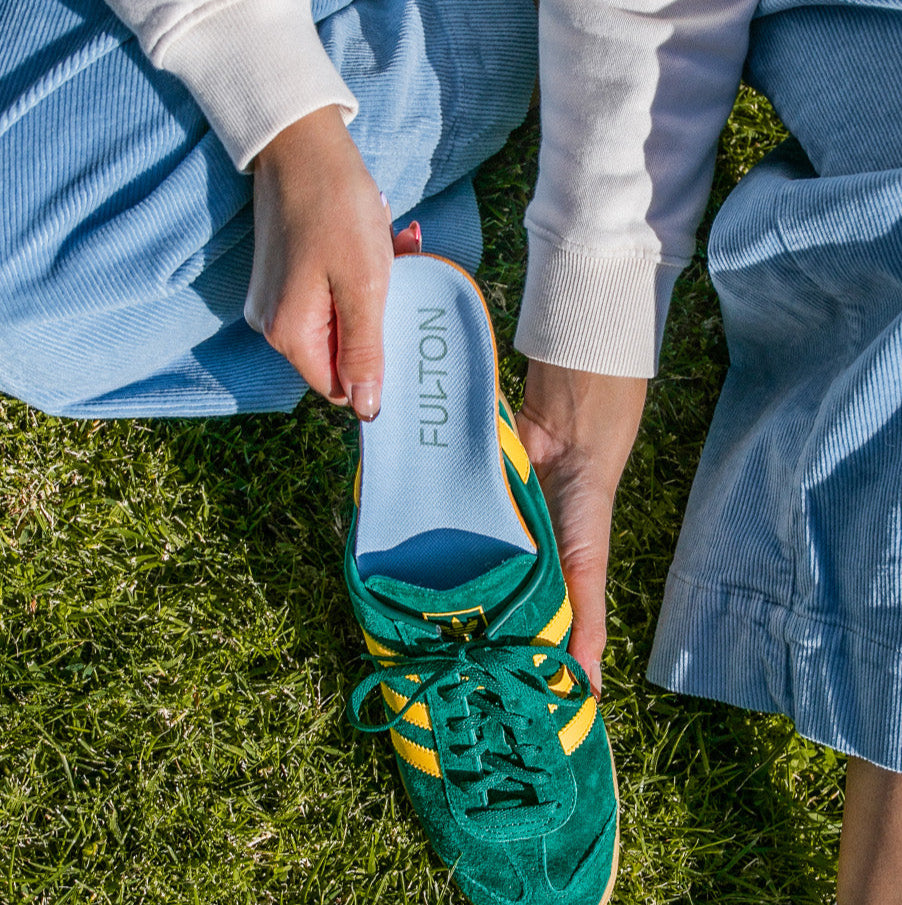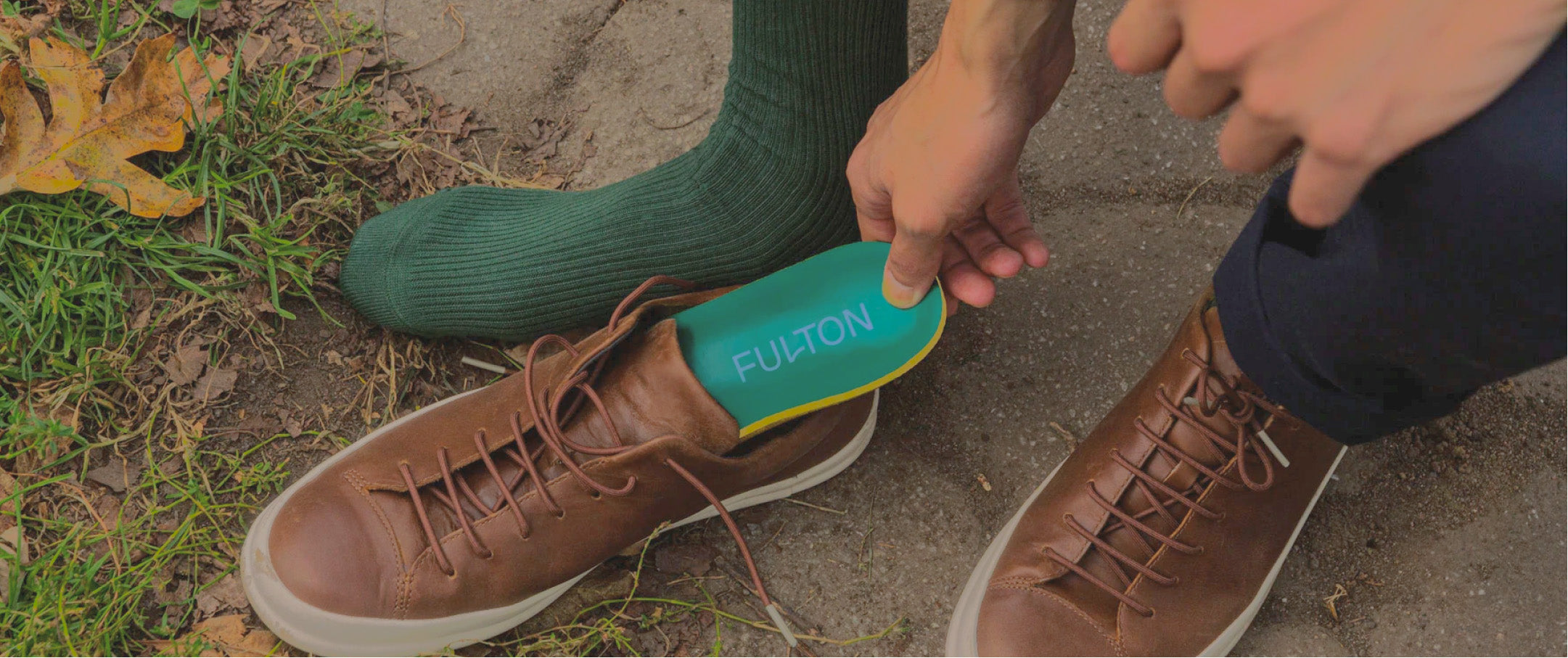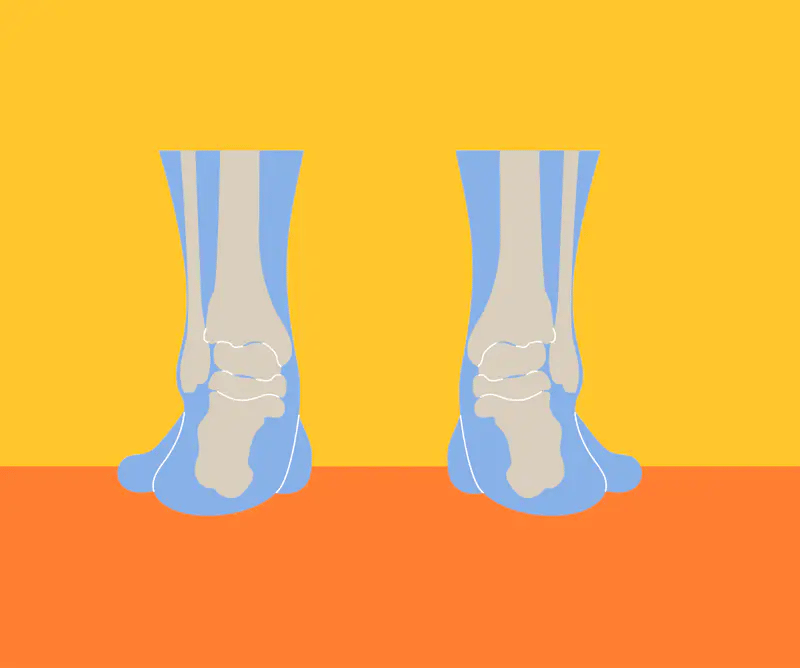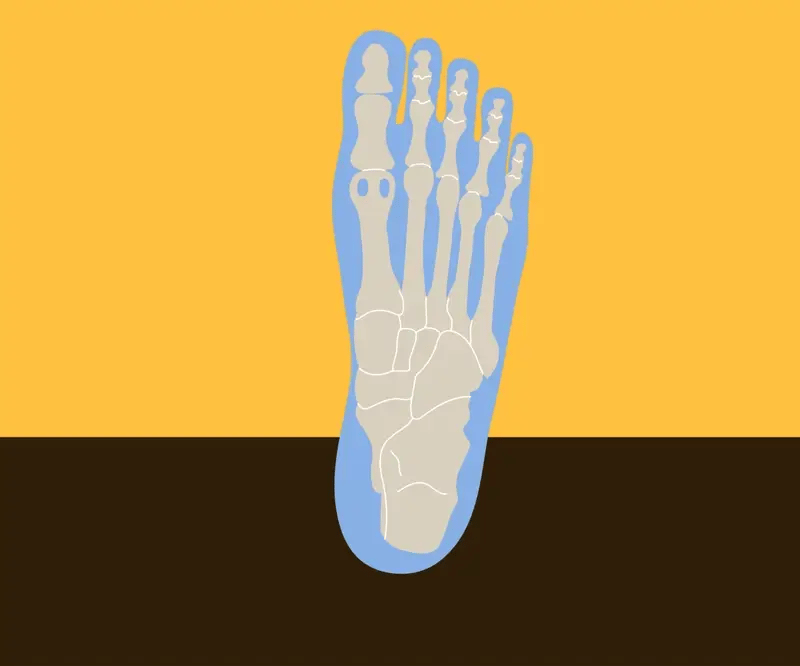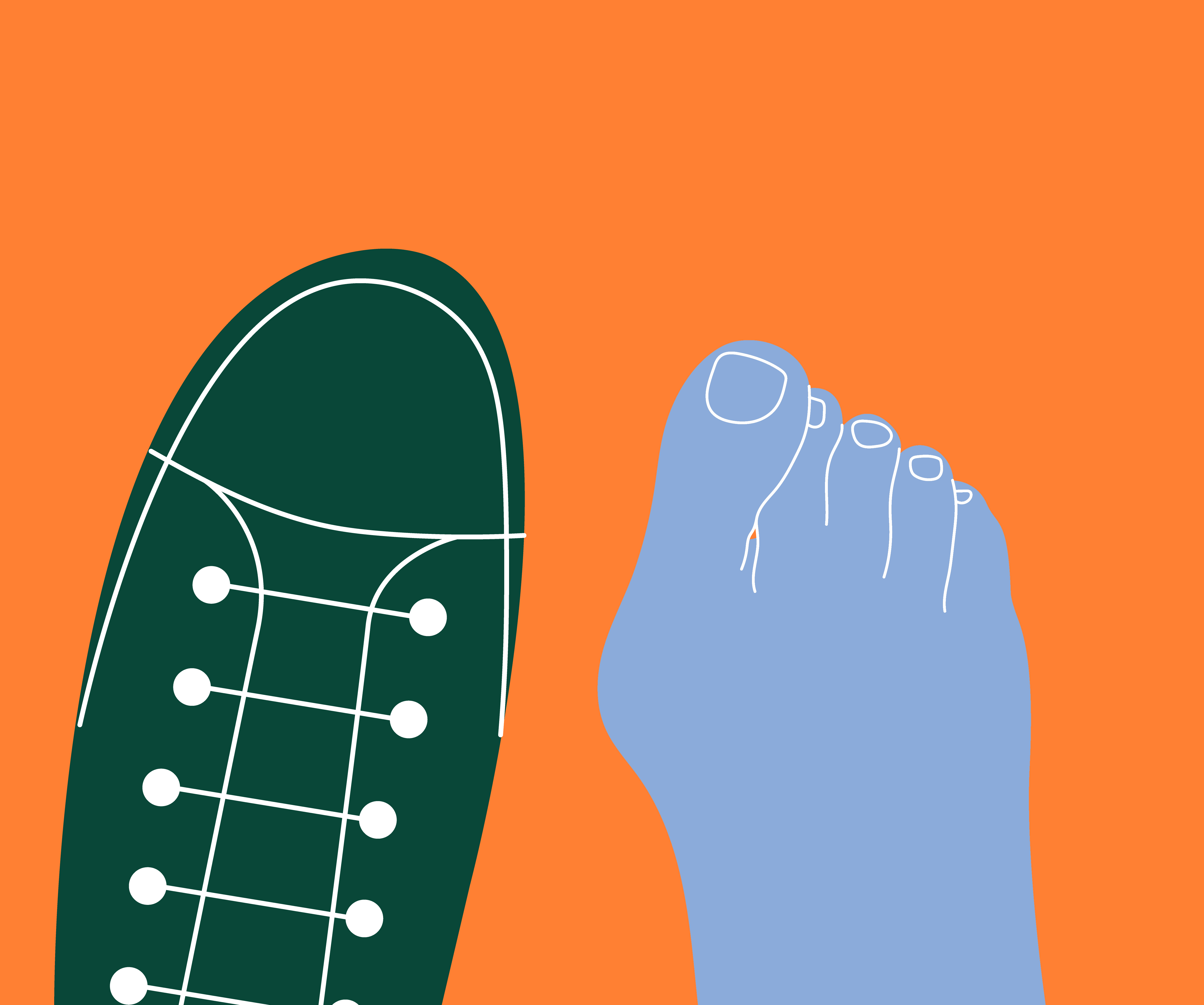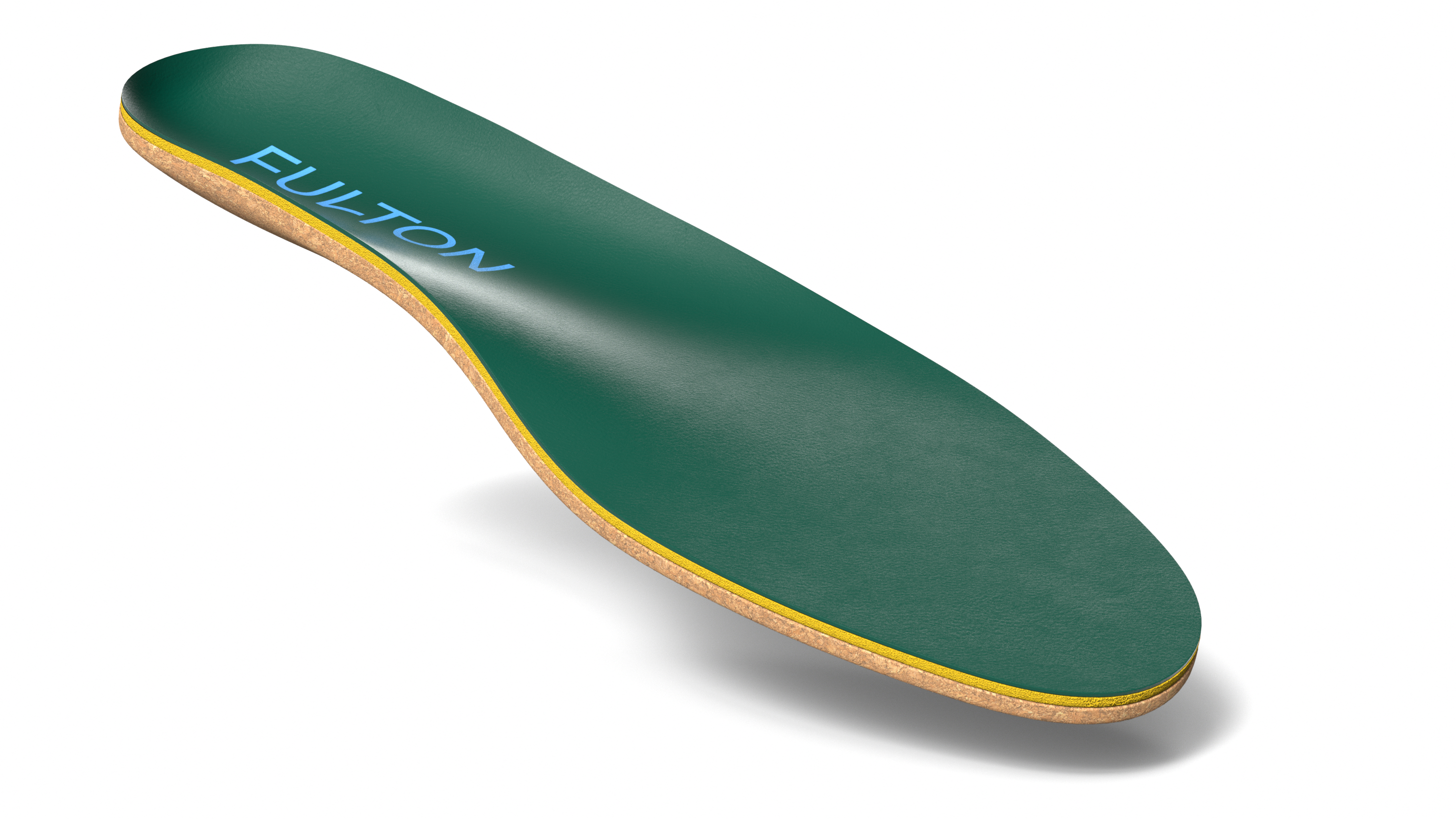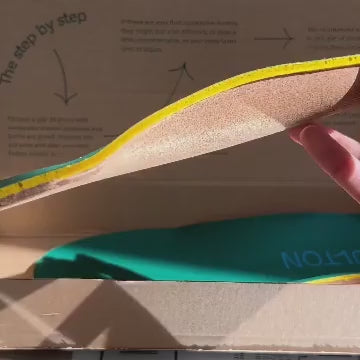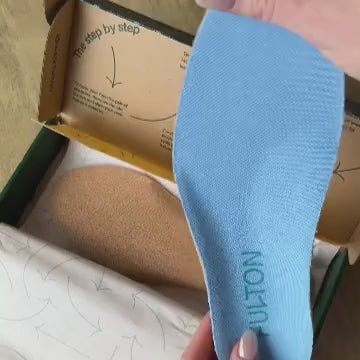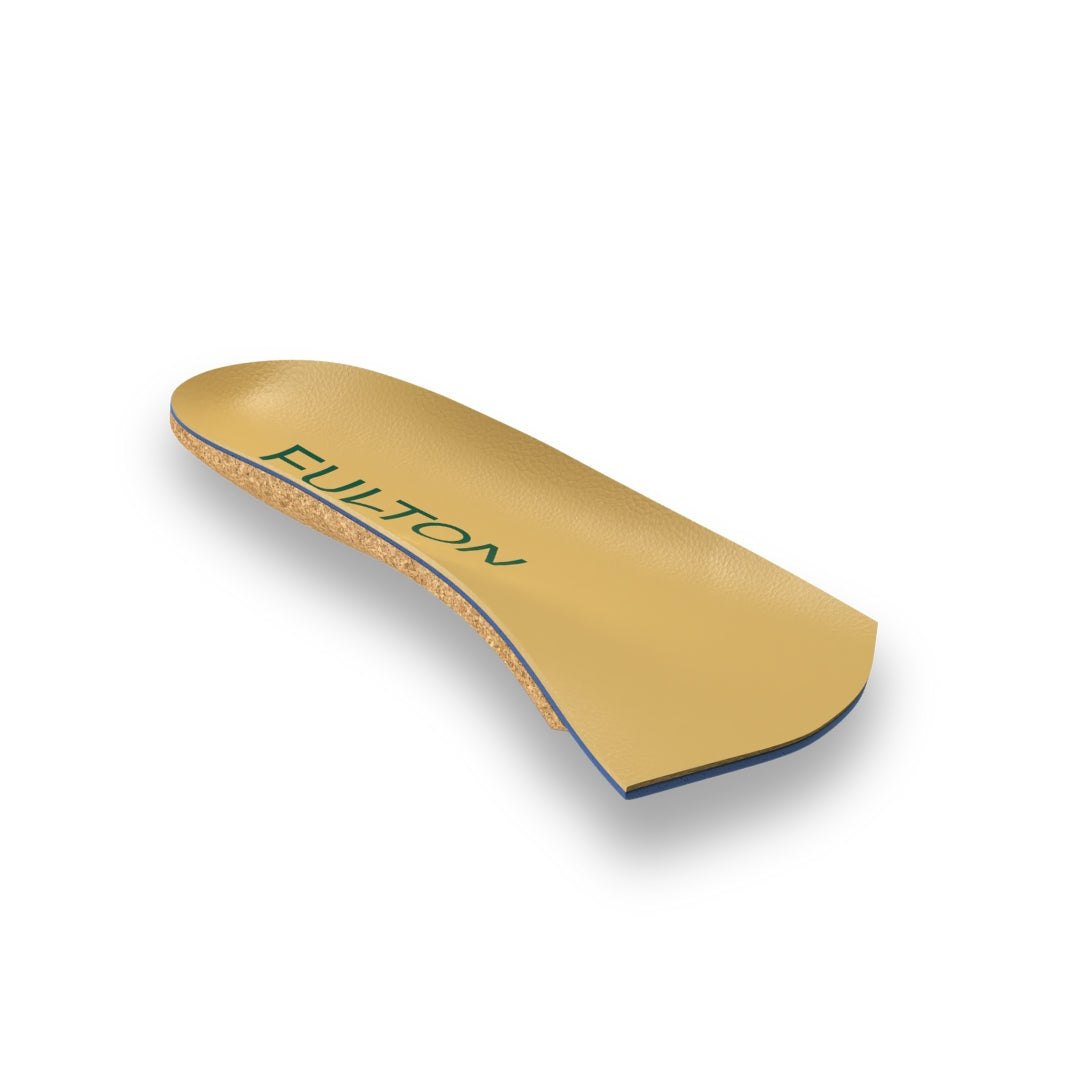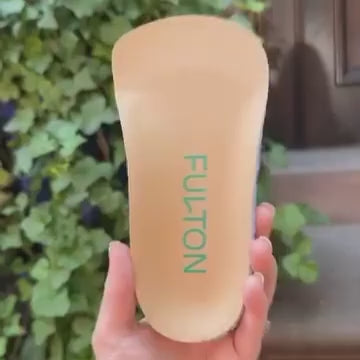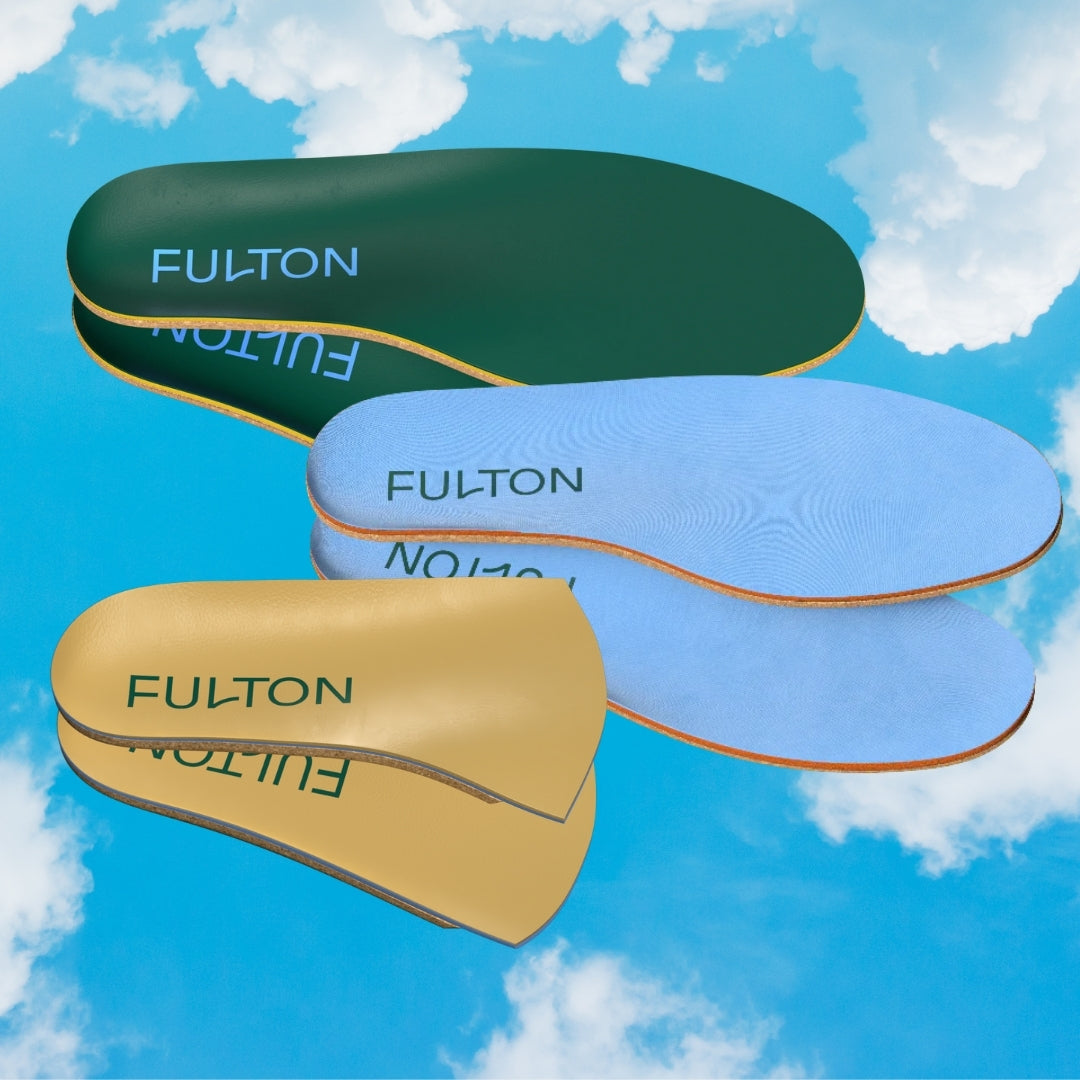By Libie Motchan
Updated on 9/18/2025
TLDR: Tendonitis is a painful condition affecting the foot and ankle, but it can be prevented with supportive insoles. After 800 hours of testing, we've discovered the best insoles for tendonitis - top of the list is The Classic Insole from Fulton, followed by The Athletic Insole from Fulton because of their custom molding cork arch support and deep heel cup that offer unrivaled stability and support to prevent eliminate tendinitis for good.
Tendonitis can be painful and limiting, but the right insoles can make a huge difference. Insoles that provide arch support, shock absorption, and alignment help reduce strain on tendons, speeding up recovery and preventing flare-ups. Below we’ll cover causes, prevention, and the best insoles for tendonitis.
What is Tendonitis?
Tendonitis is inflammation of a tendon, the tissue that connects muscle to bone. It often occurs in the foot and ankle due to repetitive stress or improper support. Symptoms include pain, swelling, and stiffness that worsen with activity.
Causes of Tendonitis
The main causes of tendonitis include:
- Repetitive stress on tendons from walking, running, or standing
- Poor footwear without arch support
- Sudden increase in activity levels
- Flat feet or overpronation that increase tendon strain
Risk Factors for Developing Tendonitis
You are more likely to develop tendonitis if you:
- Play high-impact sports like running, tennis, or basketball
- Work jobs that require standing all day
- Have flat feet or high arches
- Wear unsupportive shoes, such as flats or worn-out sneakers
- Are over 40, as tendon flexibility decreases with age
Importance of Proper Arch Support for Preventing Tendonitis
Proper arch support reduces tendon stress by aligning the foot and distributing weight evenly. Without it, tendons overcompensate, leading to irritation and inflammation. Insoles with strong arch support are one of the most effective ways to prevent tendonitis.
How Insoles Can Help Alleviate Tendonitis
Insoles help alleviate tendonitis by:
- Supporting arches to reduce tendon strain
- Absorbing shock to protect tendons from impact
- Promoting proper foot alignment to prevent overuse
- Providing cushioning for pain relief during recovery
Factors to Consider When Choosing Insoles
When shopping for insoles for tendonitis, look for:
- Arch support: medium or firm, depending on your foot type
- Shock absorption: foam, cork, or gel for impact relief
- Fit: trim-to-fit designs for everyday shoes or sport-specific models
- Breathability: materials like cork and wool keep feet dry
- Durability: long-lasting support for daily use
Best Insoles for Tendonitis
1. Fulton Classic Insole
Why it’s best: Best custom-molding supportive insole for tendonitis.
- Key Features: Cork base, vegan cactus leather top layer, arch support for alignment, deep heel cup.
- Pros: Comfortable for all-day wear, made of shock absorbing materials, custom molds to the way you walk supportive for flat feet.
- Cons: Not designed for high-impact sports.
- Pricing: $48
- Customer Reviews: Users praise comfort and arch support for walking and work shoes.
★★★★★
James L., Retail Worker (Fulton Classic Insole)
"Standing all day used to leave my feet aching, especially around my tendons. With the Fulton Classic Insoles, I can get through long shifts without the constant throbbing pain. They’ve been a game-changer for my job."
2. Fulton Athletic Insole
Why it’s best: Best for athletes with tendonitis needing high-impact support.
- Key Features: Deep heel cup, cork base, shock-absorbing foam, reinforced arch support.
- Pros: Designed for running and high impact, strong support, breathable. Offers custom molding cork arch support.
- Cons: More rigid than gel insoles
- Pricing: $48
- Customer Reviews: Runners report reduced tendon pain and better recovery after workouts.
★★★★★
Sarah M., Runner (Fulton Athletic Insole)
"I’ve struggled with Achilles tendonitis for years. The Fulton Athletic Insole gave me the arch support I needed to finally run pain-free. After two weeks, I noticed less stiffness and better recovery after workouts."
3. Fulton Universal Insole
Why it’s best: Best versatile insole for multiple shoe types.
- Key Features: Slim design, cork base, arch support that fits dress shoes or sneakers.
- Pros: Fits in a wide range of shoes, lightweight, supportive. Custom molding cork arch support
- Cons: Less cushioning than Athletic model.
- Pricing: $48.
-
Customer Reviews: Loved for versatility—fits into dress shoes without sacrificing support.
★★★★★
Amanda K., Teacher (Fulton Universal Insole)
"I needed something slim enough for my dress shoes but still supportive. The Fulton Universal Insoles not only fit perfectly, but they’ve also reduced the tendon flare-ups I used to get from walking between classrooms all day."
4. Powerstep Pulse Maxx
Why it’s best: Best for maximum motion control for tendonitis.
- Key Features: Firm arch support, dual-layer cushioning.
- Pros: Good for overpronation, high durability
- Cons: Too firm for some users, requires break-in period.
- Pricing: Around $50.
-
Customer Reviews: High marks for stability in tendonitis sufferers.
5. CURREX BIKEPRO Insoles
Why it’s best: Best tendonitis relief for cyclists.
- Key Features: Dynamic arch support, cycling-specific design, moisture-wicking.
- Pros: Tailored to cycling shoes, lightweight, reduces tendon stress.
- Cons: Not versatile outside cycling shoes.
- Pricing: Around $60.
-
Customer Reviews: Cyclists report reduced knee and tendon pain during long rides.
Compare
| Insole | Best For | Arch Support | Cushioning | Price | Customer Rating |
|---|---|---|---|---|---|
| Fulton Classic | Everyday wear | Customized | High | $48 | ★★★★★ |
| Fulton Athletic | Sports & running | Customized | High | $48 | ★★★★★ |
| Fulton Universal | Versatility in shoe types | Customized | Moderate | $48 | ★★★★★ |
| Powerstep Pulse Maxx | Motion control & stability | Firm | Moderate | $50 | ★★★★☆ |
| CURREX BIKEPRO | Cycling | Dynamic | Moderate | $60 | ★★★☆☆ |
Alternative Treatments for Tendonitis
In addition to insoles, treatment options include:
- Rest and ice to reduce inflammation
- Physical therapy for strengthening and flexibility
- Anti-inflammatory medications (NSAIDs)
- Supportive footwear designed for your activity
- Orthotics prescribed by a podiatrist
Preventing Tendonitis Recurrence
To prevent tendonitis from coming back:
- Wear supportive insoles daily
- Replace worn-out shoes regularly
- Warm up and stretch before exercise
- Cross-train to avoid repetitive strain
- Maintain a healthy weight to reduce tendon stress
FAQs
Q: Can insoles cure tendonitis?
A: No, insoles don’t cure tendonitis, but they reduce stress on tendons and help with recovery.
Q: How long should I wear insoles for tendonitis?
A: Daily wear is recommended, especially during activities that stress your feet.
Q: How soon will I feel relief with insoles?
A: Many users report reduced pain within days to weeks, depending on severity and activity level.
Q: How long does Achilles tendonitis last?
A: Healing time varies from person to person and depends on individual factors like the injury’s severity and treatment methods. In most cases, it will take several months to heal completely.
Q: What does Achilles tendonitis feel like?
A: Most people with Achilles tendonitis report pain in the heel and along the length of the tendon, especially in the morning or while running and walking.
Q: Can you run with Achilles tendonitis?
A: Running with Achilles tendonitis may be possible, but it’s usually not advised. It could aggravate the condition and cause further injury, so it’s best to wait to resume running until you’re healed.
How We Tested the Insoles / Why Trust Our Analysis
We know tendonitis relief is serious, and the wrong product can make pain worse. That’s why we used a comprehensive testing process before making our recommendations.
-
800+ hours of testing: Our team wore each insole across daily activities — walking, standing, running, and sports — to see how they performed under real-life conditions.
-
Diverse testers: We included athletes, retail workers, teachers, and everyday users with varying degrees of tendonitis.
-
Key factors measured: We focused on arch support, cushioning, shock absorption, shoe compatibility, durability, and overall comfort.
-
Medical input: We consulted podiatrists for insights on tendonitis pain triggers and what to look for in insoles.
-
Customer feedback: In addition to hands-on testing, we reviewed hundreds of verified customer reviews to ensure our findings aligned with real-world experiences.
Our testing showed that Fulton insoles consistently provided the best balance of support, cushioning, and versatility for tendonitis relief — which is why they stand out as our top recommendation.


